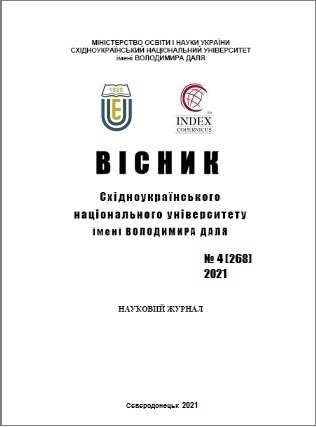Modeling of the electric drive of the main motion of the rolling cage as a multi-mass electromechanical system
DOI:
https://doi.org/10.33216/1998-7927-2021-268-4-30-34Keywords:
rolling cage, springy viscous element, mechanical fluctuationsAbstract
The model of rolling stand of a thick-plate rolling mill 3000 has been designed in the work in order to determine the oscillations frequencies that occur during operation, the effect of their amplitude on the dynamic deviations of the speed of the working body from the specified one.Presented results of the research dynamic to rolling cage 3000 at presentation her as seven masses electromechanic system. Shown influence clearance in mechanical issue on dynamic of the mechanism.The research by the method of mathematical modeling in the design and operation of mechanical equipment is substantiated.The design diagram of mechanical part of the electromechanical system is presented.Using the simulation results it was confirmed that the influence of internal viscous friction in shafting on the oscillation damping is not significant in relation to the damping properties of electric drive.Therefore, in the first approximation, it can be ignored. The electric drive of the rolling stand was considered as a TP-D system with speed and current regulators at their standard settings to the modular optimum. To reduce the magnitude of the elastic moments in the kinematic chain of the stand the armature current intensity generator in the electric drive is used.Simulation of the processes was carried out in Simulink of the MATLAB package.Thestand model is designed according to design scheme and reflects the branching into two channels with their combination through an elastic element – the material that is rolled.Based on real geometry and taking into account the properties of material the stiffness of shafts of mechanical transmissions were calculated.The model was set to a rolling program with a variable speed – in order to compensate the thickness difference, which corresponds to modern technological trends.Comparing the simulation results, it was found that the presence of a gap provokes the appearance of self-oscillations, the damping of which in a real mechanical system will occur due to damping properties of the shafts.The damping of oscillations takes place due to the damping properties of the electric drive. The appearance of a gap in the spindles leads to an increase in the system vibration frequency (70-80 Hz).
References
1. Vul'fson I.I. Vvedenie v dinamiku mehanizmov s uchetom uprugosti zven'ev. Uch. pos. – L.: LPI, 1977.
2. Morozov D.I., Andrejeva N.I., Shevchenko I.S. Modeljuvannja elektropryvodu kliti prokatnogo stana jak bagatomasovoi' elektromehanichnoi' systemy // Visnyk KrNU imeni Myhajla Ostrograds'kogo. № 3(56) /2009, chastyna 2, p. 13-17.
3. BrovmanM.Ja. Dinamicheskienagruzkipriprokatketolstyhlistov // Intensifikacijaproizvodstvalistovojstali: Temat. otrasl. sb. – M.: Metallurgija, 1988. – p.14-20.

